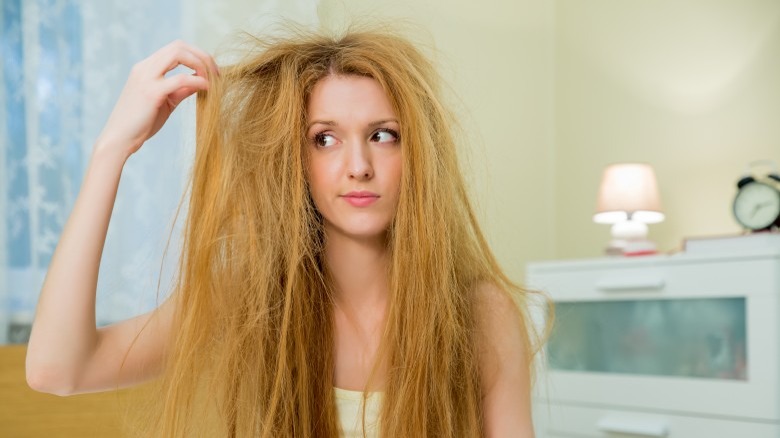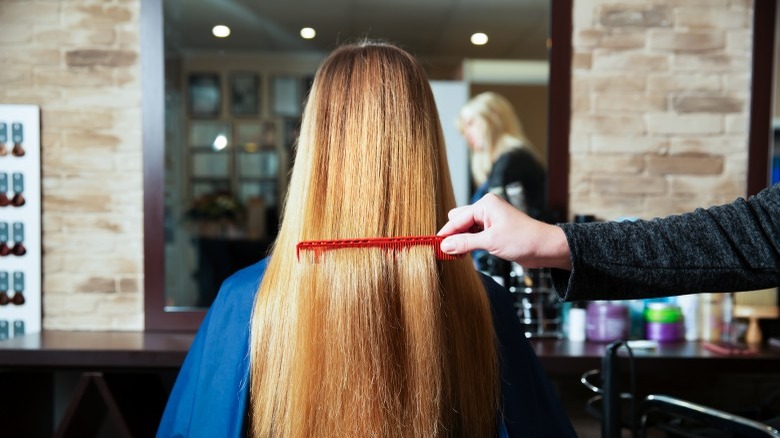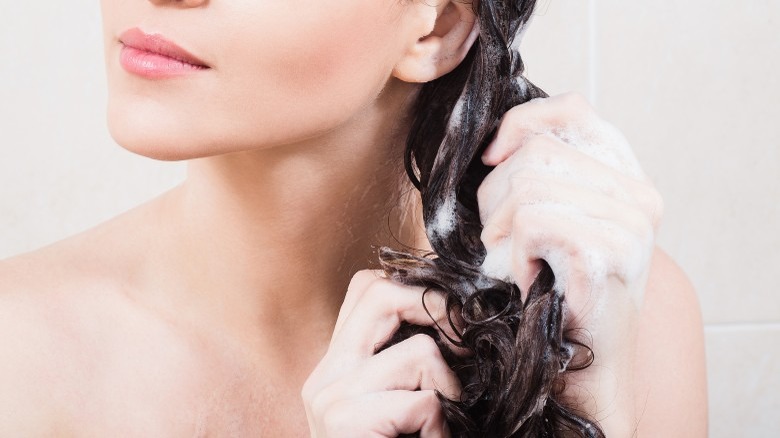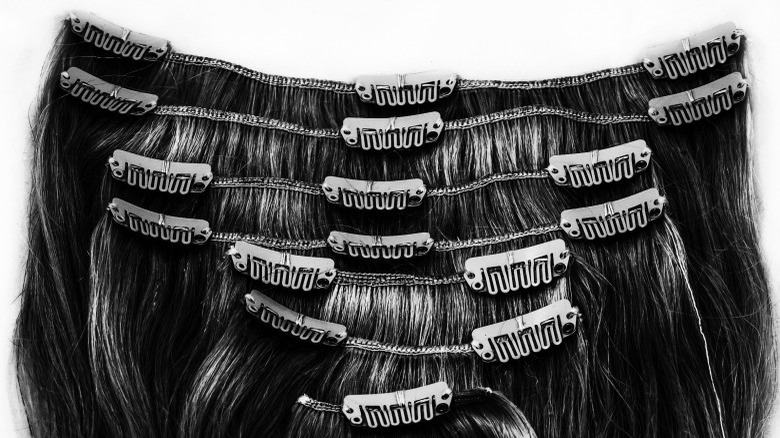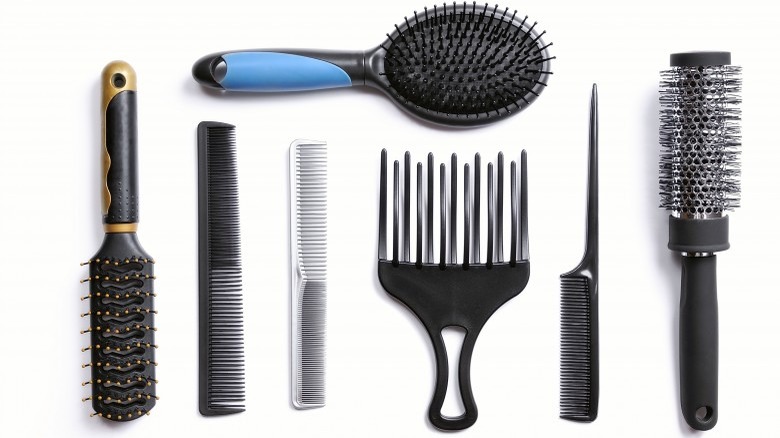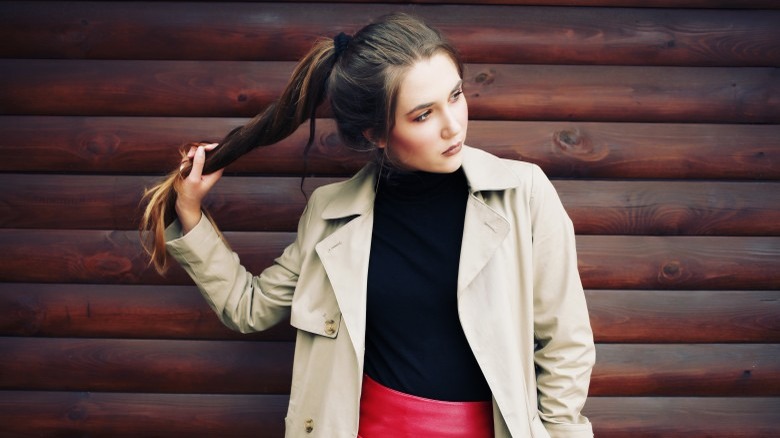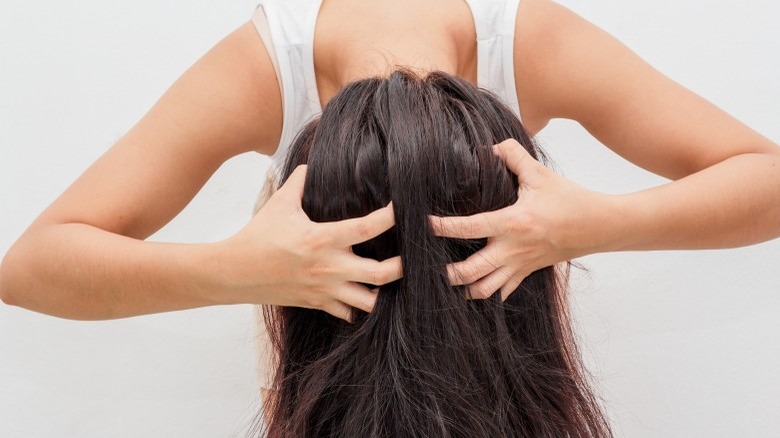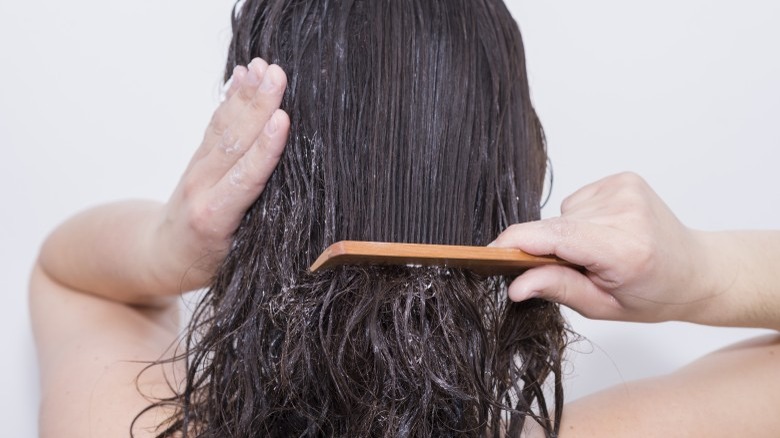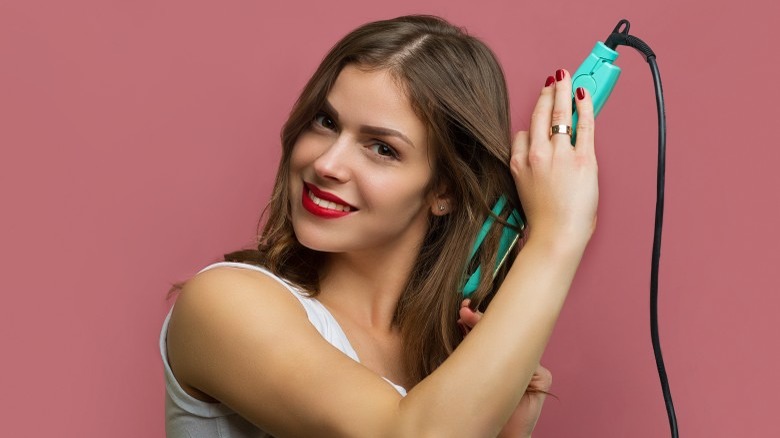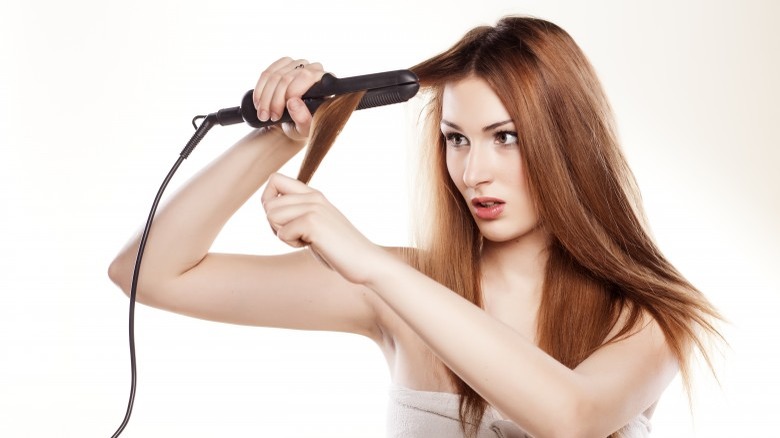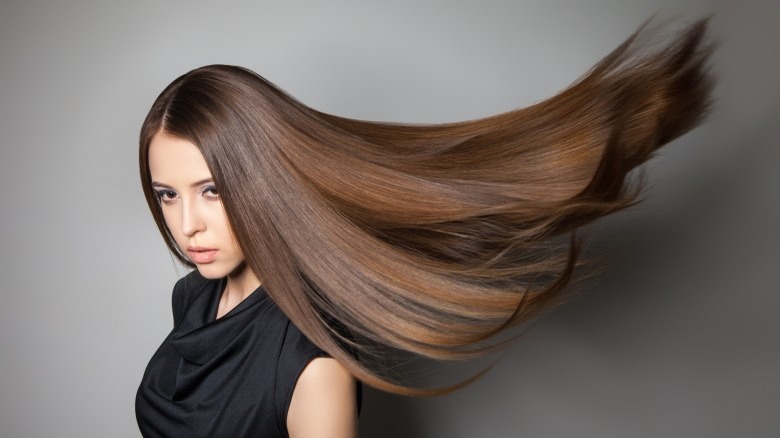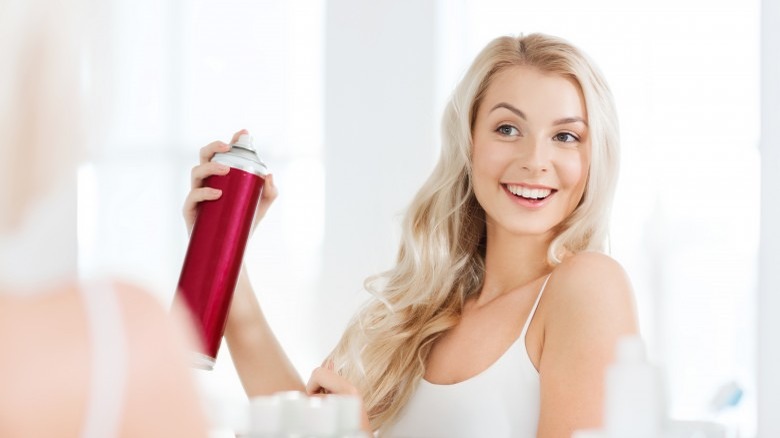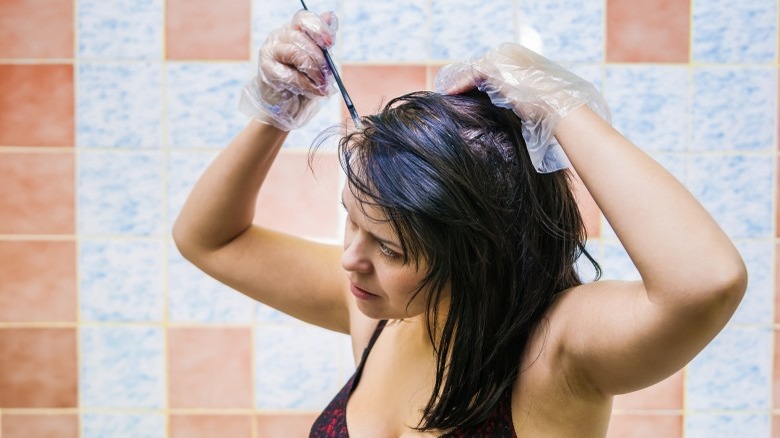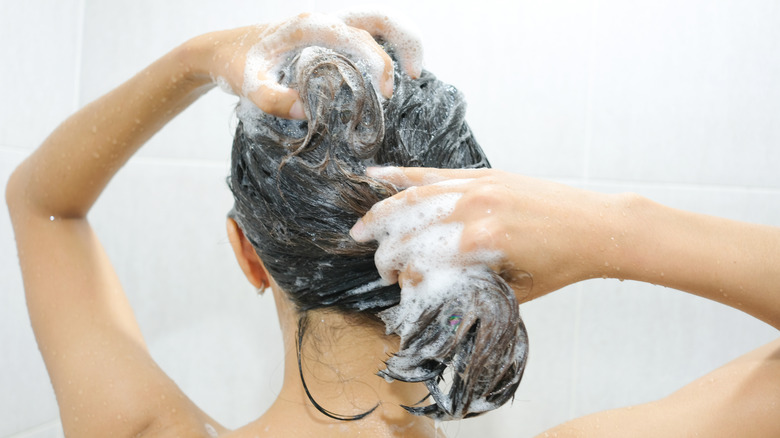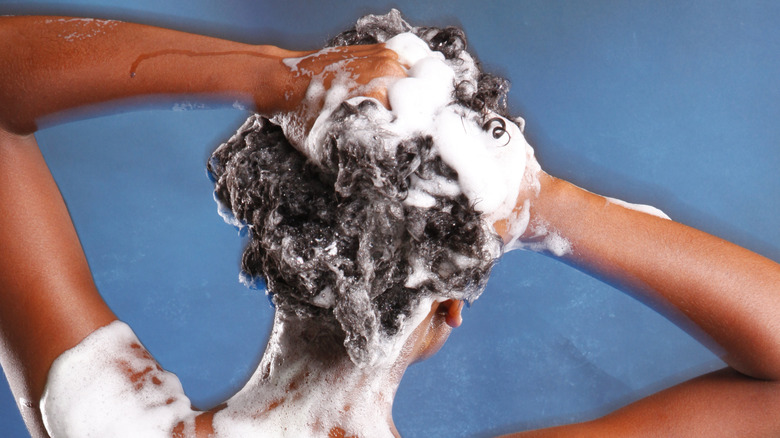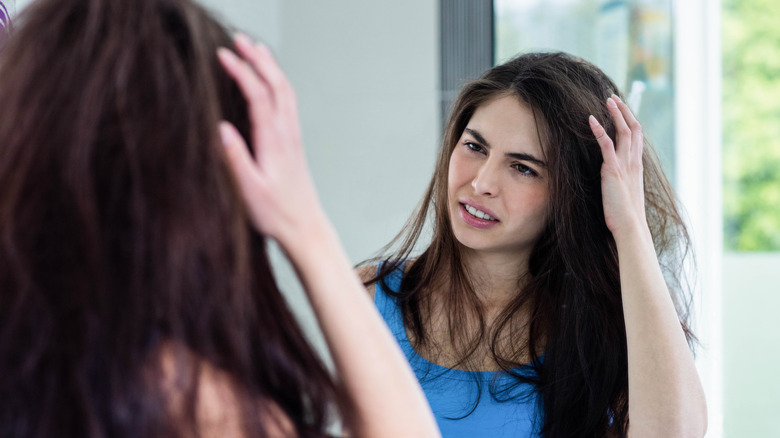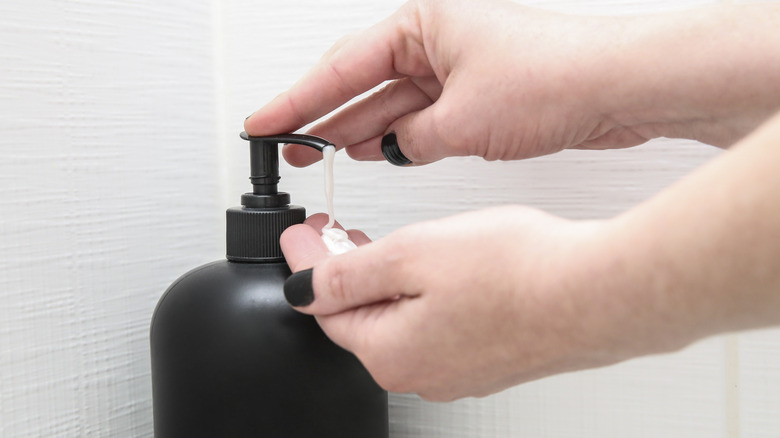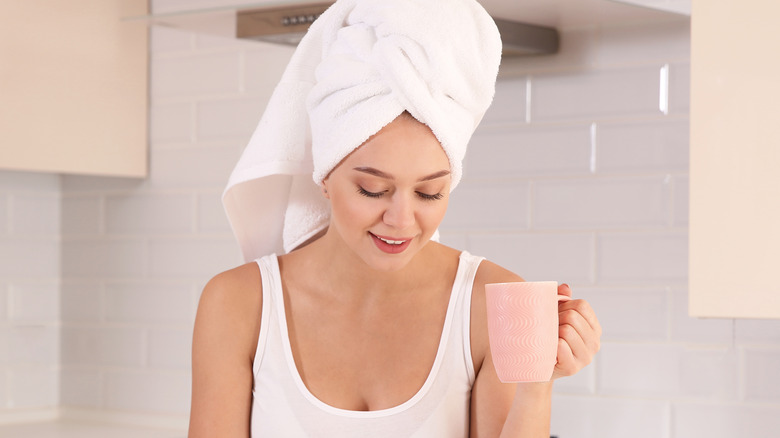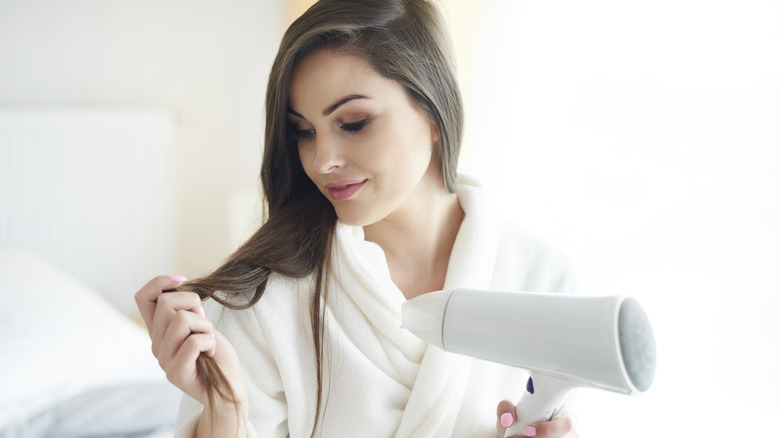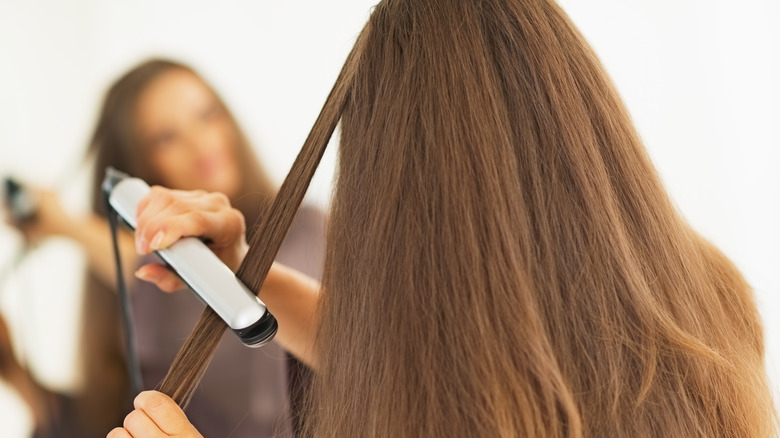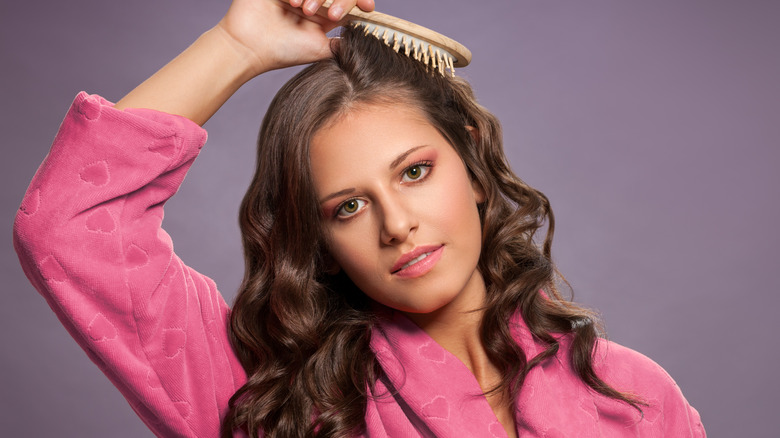Ways We All Ruin Our Hair
Oh, what a difference great hair makes. From framing your face to enhancing your favorite features, gorgeous locks have the power to change up your entire look. Not to mention the things a great mane can do for your self-confidence. Still, with great hair comes great responsibility. Dyeing, cutting, hair spraying, blow-drying ... it takes a lot of work to make it all look good.
But did you know many of the things we do to achieve hair perfection are the very things that are ruining our hair in the process? That's why we took to the experts to find out the everyday habits that are frying, frizzing, and ultimately killing our healthy tresses.
Here are some popular hair care practices that might be sabotaging your chances at a gorgeous head of hair.
Skipping regular haircuts
If you've ever grown out your hair, then you know how easy it can be to become attached to that extra-long mane. So attached, in fact, many of us skip out on regular trims just to let our hair get a teensy bit longer. And while there's nothing wrong with channeling our inner Rapunzel, waiting too long between trims can actually be damaging those beautiful, long locks.
"Most of the time, people with long hair think getting a haircut is not necessary," Jamielynn De Leon, owner of Rogue House Salon in NYC, told The List. "The truth is, yes, your hair grows from the roots, but the ends of your hair is what is damaged and needs special attention."
De Leon explains that daily use of shampoos that contain harsh sulfates and salts can strip the hair and cause split ends. "Haircuts preserve the integrity of the hair and maintain a fast growth period. A hair dusting, which helps to take out the split ends, is best for those who hate having haircuts," she said. De Leon also advises you can keep your locks looking healthy and beautiful with regular haircuts every two to three months.
Using too much conditioner
Silky soft strands are the Holy Grail of beautiful hair. That's why many of us love to lather up on conditioner like it's going out of style. The more conditioner, the softer the hair, right? Not quite.
"Conditioners are for adding moisture and not making your hair soft as one might think," said De Leon, who also noted that many of her clients misunderstand the proper way to condition their hair. "You might think that you should put conditioner on the scalp, but it should just be used for the ends of the hair."
De Leo also notes that like most shampoos, daily conditioners often contain sulfates, which don't preserve the hair but instead, strip it. Instead, she recommends using a hair mask once or twice a week, depending on how processed your hair is. "Doing so will add proteins and nutrients for the hair," she said.
Celebrity hairstylist, Vernon Francois, who's worked with stars like Lupita Nyong'o, Tracee Ellis Ross, and Ruth Negga, recommends indulging in moisturizing oils to keep your hair healthy. "Moroccan argan oil is one of my favorite options because it's easily absorbed by the hair, while being extremely hydrating," he shared.
Making hair extensions your BFF
A full head of luxurious extensions might make you feel like J.Lo, but buyer beware. Underneath the surface, they might be doing more harm than good.
"Not having the right type of extensions or maintenance on the hair can cause tears and balding if the hair is being pulled," De Leon warns. "There are many types of extensions these days, my favorite are the tapes in because they are gentle for the hair."
Your best bet is to do your research and find a reputable hairdresser who specializes in extensions. This can help ensure you find the extensions that work best for your particular hair type.
Thinking one brush fits all
While you can save a few extra bucks by sticking to just any old drug store hair brush, this isn't the best way to keep your locks healthy.
"Certain brushes can pull the hair," De Leon said. "Ladies are inclined to use brushes with a lot of bristles, but are not really looking at the labels and the type of bristles." The best tool for your hair, De Leon advises, are soft bristles, "gentle enough to pull through, like the Wet Brush, Teaser, or Mason Pearson." She added, "Using a comb is always the safest bet, but make sure you're taking the right amount of sections before tearing that hair."
Wearing too-tight updos
Braids and ponytails can be stylish time-savers, especially on days when humidity isn't on our hair's side. But beware of too-tight hairstyles, no matter how sleek they look. "Pulling hair in ponytails can damage your front hairline if it's too tight," said Dani Everson, owner and lead stylist at Clementine's Salon in Denver, Colorado. "Opt for a looser lower ponytail toward the nape of the neck." The same goes for too-tight braids. Everson suggests going for a looser braid look to let your hair breath.
Rubber bands and elastics can also break the hair. "Try using a softer option," Everson said, adding that 80's scrunchies or ribbons are both fun options that won't damage your locks.
Over-using dry shampoo
Just like throwing your hair up in a ponytail, dry shampoo can be a great option when we're in a pinch. And while a quick post-gym spray before an unexpected happy hour is perfectly harmless, you probably don't want to switch out too many regular hair washes with a dry shampoo spritz.
"More recently, I'm seeing more patients losing hair by using dry shampoos too frequently," NYC dermatologist Dhaval G. Bhanusali, MD, told us. "By doing this, you allow for a build-up on the hair shaft that can weigh down the hair, and cause increased inflammation. This can lead to increased susceptibility to damage as well."
Dr. Bhanusali recommends one to two dry shampoo uses per week as a general rule of thumb.
Combing hair when wet
If you're anything like me, you know how dreadful it can be to detangle fine hair. While that quick comb through in the shower definitely saves time (and agony) when trying to detangle your hair later on, this hack could be causing some serious damage. "Wet hair is much more vulnerable and susceptible to breakage," De Leon said. If time permits, she suggests letting your hair dry before combing, making sure to start at the tips of the hair and work up to the roots. "If you must comb wet hair," she notes, "use a wide-toothed comb."
Ironing damp hair
We're pretty obsessed with our flat iron. And we must admit, when we first heard there was such thing as a wet-to-dry iron (a.k.a. one you can use when your hair is still semi-damp) we thought we had hit the jackpot of time-saving hair hacks. That is, until the first time we used one and was terrified by the sound of our own hair sizzling under the heat. "This is burning your hair dry, causing hair to be brittle," Brooke Richardson, owner of East Edge Salon in Portland, Maine, told me.
It's definitely better to let your hair fully dry before attempting to straighten, even if it does take a bit of extra time.
Combating frizz with heat
Similarly, it can be easy to want to pull out the flat iron any time we wake up with a head full of frizz. But Richardson says ironing frizzy hair is actually counterproductive.
"[Ironing] is not making your hair look less frizzy or damaged," she said. "It is burning damaged pieces off which is causing more breakage."
The same goes for blow-drying your hair with too much heat. "Over-heating the hair with a blow-dryer to achieve a smoother or wavier look is a falsity," said celebrity hair stylist, Sean Donaldson, who has styled Kate Winslet, Kate Upton, and Whitney Port, told The List. "The higher heat intensity only breaks and fries the hair. Using a lower temperature will not only protect the hair but you'll get the same results."
Using keratin for perfectly straight hair
While some of us dream of beautiful waves and curls, others see perfectly straight hair as the ultimate in #HairGoals. If you're of the latter group, you may have considered keratin to achieve this look. However, Donaldson says this is a common misconception. "Keratin treatments are not the replacement for relaxing or straightening hair," he explained. "They smooth! They also are not for all hair types and repetitive use can be damaging."
Thinking hairspray doesn't hurt
Hairspray is one of those go-to hair solutions most of us don't think twice about. Pulling your hair back? Add some hairspray. Just finished blowing your hair out? Give it a little hairspray. It seems harmless enough, but, according to Richardson, it can also cause our hair to become dull and damaged. "Hair spray is one of the best things to take stains out of clothes and yet we put it in our hair!"
Yikes, think about that the next time you want to reach for that can o' spray.
Using box hair color
Dyeing our hair at home seems like a good idea — it's cheaper, more convenient, and takes way less time than a trip to the salon. But if you're committed to healthy hair, Robertson suggests leaving this practice to the pros. "Box color is bad because it's formulated for all hair types, which means it has the highest volume developer," she said.
With an experienced hair stylist, you'll not only get access to salon quality products, you'll make sure the right formula for your hair type ends up on your scalp, and you'll also be sure it's being applied properly. Sounds like a win-win to us.
Scrubbing your scalp too hard
While you likely love the scalp massages your stylist gives you while washing your hair at the salon, they're really not something you should DIY while rinsing your hair at home. Dove celebrity stylist Cynthia Alvarez explained why this is the case when speaking to Glamour. "Wet hair is weak and more prone to breaking," she revealed, "so be gentle when washing your own hair." But there's more to it than just being gentle. As it happens, there's even a technique you should be following when cleansing your scalp.
"Stroke your scalp from forehead to nape, on the sides, and along the hairline rather than rubbing aggressively," the stylist advised. If you have oily hair, you might think being tough on your scalp will help get rid of excess oil. In reality, your scalp will overproduce oil when scrubbed too hard. Swear off the vicious cycle and leave scalp massages to the experts.
Mixing shampoo and conditioner brands
It's all too easy to rationalize splurging on a top-of-the-line shampoo — especially if you think you'll just make up the difference by buying a super cheap off-brand conditioner to go along with it. After all, shampoo is the most important part, right? Hmm. Not exactly.
Good Housekeeping's beauty lab director, Birnur Aral, said in an interview with the publication: "Shampoos and conditioners are developed and tested for efficacy in pairs, which allows their manufacturers to optimize ingredients for their individual functions." Does this mean what we think it means? Aral further explained, saying, "Mixing brands and collections may produce less effective results, including under- and over-conditioning." In turn, over-conditioning could lead to build-up, according to Danusia Wnek, a chemist at Good Housekeeping's beauty lab.
The best bet, for your hair at least, is to buy your shampoo and conditioner in pairs and use as directed.
Skipping conditioner
If you're thinking you'll get back at the man by not purchasing conditioner altogether instead of just buying your hair care products in pairs, we have to warn you: That's a really, really bad idea. Conditioner may seem optional, but it's not.
"If you stop using conditioner, your hair will likely be more difficult to comb," cosmetic chemist Perry Romanowski revealed to Allure. "It will also be more likely to have flyaways and frizz and be prone to splitting and breaking during your styling routine."
Some think that conditioner reduces their hair's natural volume and choose not to use it for that reason. But as long as you're not rubbing conditioner directly into your roots, that won't be a problem. Celebrity hairstylist Nunzio Saviano told Glamour, "After cleansing, your scalp regains its natural oils, but your ends are still susceptible to drying out. That's why you need a conditioner." Conditioner is your friend, not foe.
Over-washing your hair
How often do you wash your hair? Whether you do it three or six times per week, there's really no one-size-fits-all number when it comes to this subject. Celebrity hairstylist Tonya Le told Insider that it all depends on on factors like your oil production and hair texture. "But paying attention to the little signs your hair is giving you can help you come up with the best washing schedule," revealed the stylist.
If your colored-treated hair fades quickly — even when you're using shampoo and conditioner made specifically for processed hair — you could be washing too often. If you've noticed that your hair has become frizzy or feels dry, that's another indicator of over-washing. "A total lack of moisture from stripping oils can also cause a dry, flaky scalp and as your scalp dries out so does your hair," Le explained.
Split ends, a dull appearance to your hair, and even dandruff can also be signs that you need to reduce how often you're washing your locks.
Washing your hair incorrectly
Even if you've cut back on the amount of times you wash your hair per week, there's a chance you're still not washing your hair in the optimum way. Yes, there is a right and wrong way to suds up.
For starters, you might be loading up your hair with too much shampoo. "Excess shampoo will not get hair cleaner; it will just make it harder to rinse, and too much conditioner can leave build-up," Good Housekeeping's beauty lab chemist Danusia Wnek told the publication. Instead of filling your palm with shampoo, start with just a dollop. You can always add more if you need to.
It's also possible that you're not thoroughly washing your hair and instead just letting shampoo concentrate in one area. To avoid that, Pantene celebrity stylist Danilo Dixon told Good Housekeeping, "Squeeze it into your palms, then use your fingers to work it from your scalp to the ends,." And don't forget to rinse well, the stylist added.
Towel-drying your hair
When you step out of the shower with drenched hair, it's second nature to grab a towel and wrap it tightly around your head. This way your wet hair isn't dripping all over the place and, at the same time, it's out of your face. It's the perfect solution ... or is it?
Celebrity hairstylist Monae Everett told HuffPost that towel-drying is actually one of the worst things women can do to their hair. The rough texture of cotton or terry cloth towels alone can cause some pretty severe damage to your precious strands. And if you squeeze your hair with the towel, watch out. "This can worsen split ends and cause small craters along the hair shaft, weakening the hair," the stylist revealed. Yikes.
All hope is not lost though. Everett recommends switching out your cotton towel for a microfiber towel or even a T-shirt to gently "blot and squeeze your hair dry."
Going to bed with wet hair
If you favor showering before bed, you face the conundrum of drying your hair before you fall asleep or hitting the hay with wet hair. We all know which option we're most likely to choose — but that decision can harm your hair.
Hairstylist Olga Gilbert told Reader's Digest that you might wake up with unintended results. "If you try to style your hair in the morning after sleeping on it wet, you're likely to have trouble styling the resulting frizziness, funny waves, flat sides, and crinkles," she explained. But this problem is purely aesthetic. However, if you try to control what your hair is going to look like in the a.m. by pulling your hair into a tight bun or a ponytail, Gilbert said you're risking hair breakage during the night because hair is weakest when it's wet.
If you must go to sleep with wet hair, you should at least make sure to use leave-in conditioner and swap out your cotton pillowcases for satin, which is less abrasive on your locks.
Your hair tools are way too hot
Going to bed with sopping wet hair isn't great for your hair's health, but, as you know, flat-ironing your damp strands isn't a fabulous idea either. What's a girl to do? You can safely heat-dry your hair with a few extra steps, according to experts.
Before blow-drying, Charles Baker Strahan, celebrity hairstylist and Herbal Essence ambassador, told Today, "Put a few drops of oil on wet hair to protect from damage while taming frizz and flyaways." Celebrity hairstylist Cynthia Alvarez said you can also use a heat-protection serum. The most important step, however, is making sure your hair tools aren't piping hot. This applies even when your hair is dry.
While thicker hair requires higher temperatures — and likewise thinner hair requires lower temperatures — there's no situation where you'd need to straighten your hair using 400 degrees of heat or more, according to celebrity stylist Jamika Wilson. "While you think this gets your hair straight and smooth, you are actually damaging the hair," she told Today.
Brushing your hair all wrong
If you don't brush your hair before you hop in the shower, you're not alone. However, celebrity hairstylist Nunzio Saviano told Shape that shampooing only creates more knots. So, if you started with tangles, shampooing is only going to compound the issue. Try to remember to brush before, especially if your hair tangles easily.
How you move your brush through your hair also makes a big difference to the health of your locks. "When you brush downward from the root, you run into tangles in the mid-shaft and ends and the hair can snap," Saviano explained. "Over time, this can add up to a lot of breakage." You'll want to detangle your hair by brushing near the ends instead, moving up a little at a time. However, this doesn't mean you should neglect your roots. They still need brushing because that's, as stylist Nick Penna revealed, "crucial for stimulating the scalp and redistributing natural oils that help condition the hair and keep it healthy."
